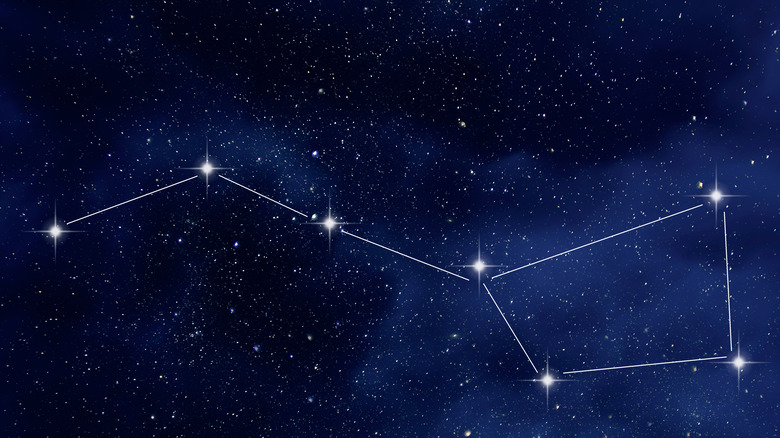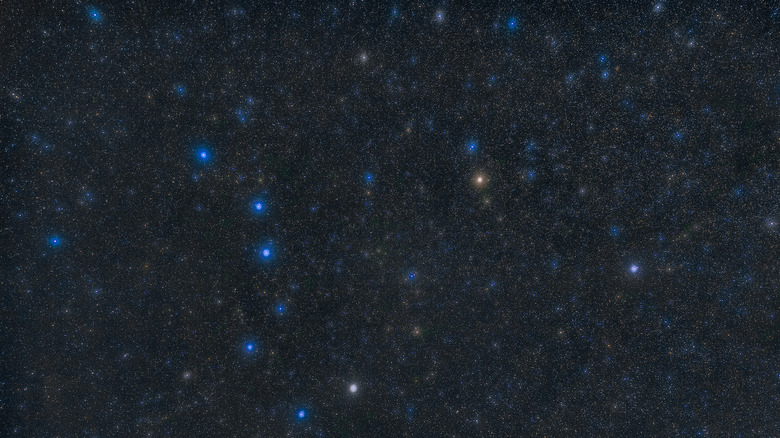Here's How To Find The Big Dipper
The Big Dipper is one of the most recognizable formations in the night sky. It's visible year-round in most of the Northern Hemisphere, along with the Little Dipper next to it. But if you've never searched for it before, the Big Dipper can be difficult to spot.
The Big Dipper is a group of seven stars, according to Almanac. Four of them will make the rectangular shape of a bowl, and three will extend out to form the handle. The Big Dipper rotates around Polaris, the North Star, which sits in the Little Dipper's handle (via EarthSky). If you have an unobstructed horizon and live north of Tennessee, according to EarthSky, you should be able to see it by looking to the north any clear night of the year.
In the spring, the Big Dipper shines brightest and is easiest to spot (per EarthSky). In the autumn, the formation drops down to its lowest point near the horizon.
What about the Little Dipper?
The Big Dipper is much easier to find than its partner, the Little Dipper, according to EarthSky. While Polaris sits in Little Dipper, EarthSky says, many of the other stars are much dimmer and hard to see without a dark sky. If you need more help, there are even apps (per Discover Magazine) that provide identifications for different constellations in the sky above.
But the two stars forming the outer edge of the Big Dipper's bowl are commonly referred to as "pointers," according to Almanac, because they point you directly to the Little Dipper next to them. Once you've found the Little Dipper, you can find Polaris.
Neither the Big Dipper or the Little Dipper are actually constellations, according to Almanac. They're technically classified as "asterisms," which are familiar formations within a larger constellation. The two groups are often considered to be partners, with similar names. The two are also known by different names, Ursa Major and Ursa Minor, which have their own basis in mythology.

